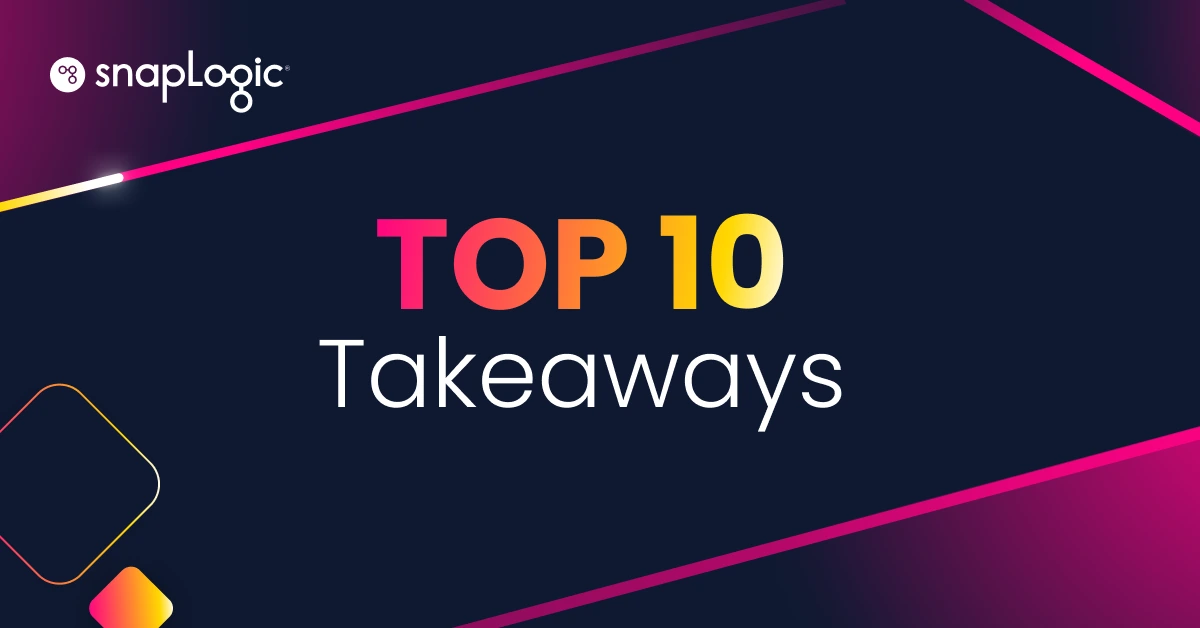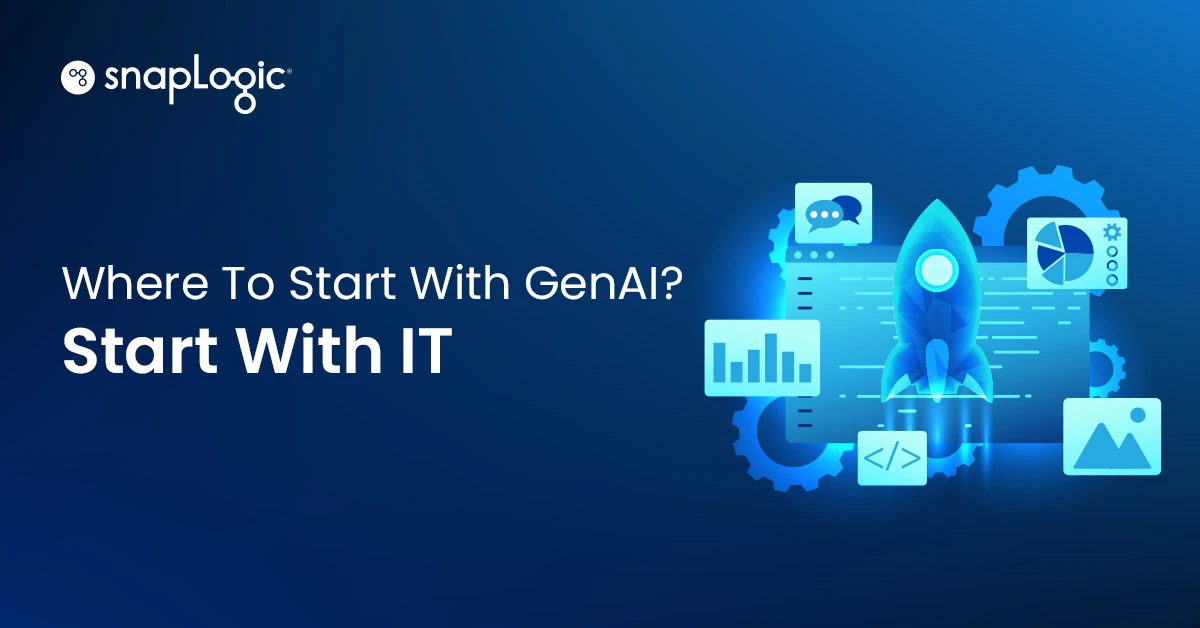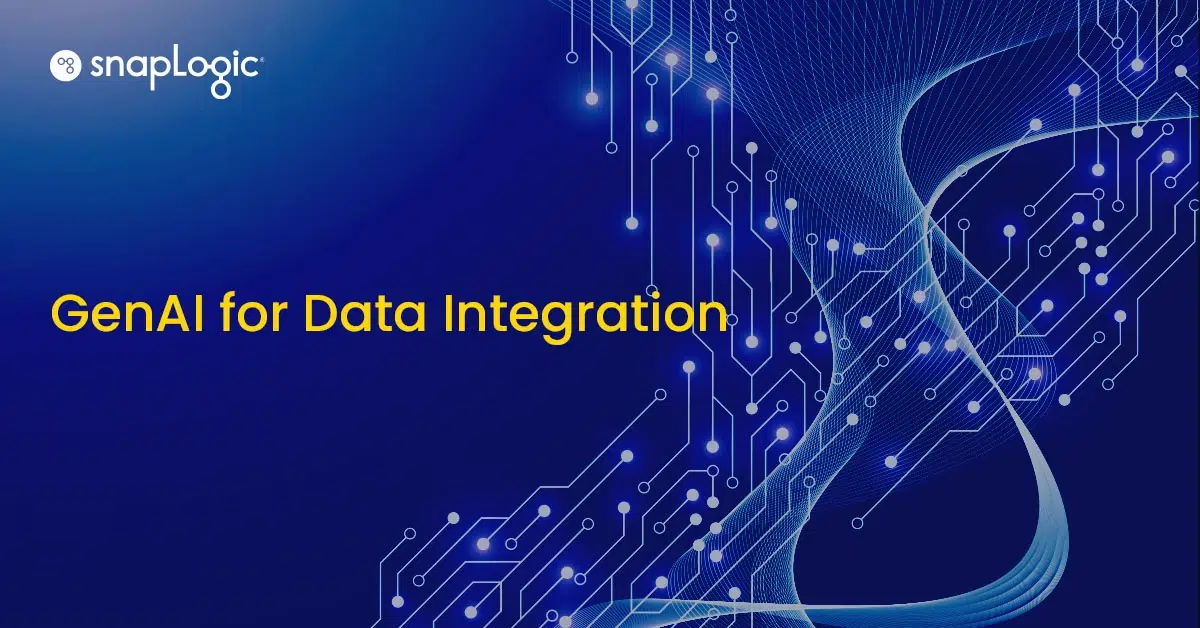We recently hosted a virtual summit, “Evolving the Enterprise With Generative Integration,” that featured presentations and discussions from industry experts on how leveraging GenAI technologies to streamline data integration processes can reduce costs, mitigate business risks, and enable better workflows.
The convergence of GenAI and data and application integration — aka generative integration – is a game-changer for enterprises, given its power to efficiently connect data across business streams and make it accessible to everyone.
With each session, I was struck by the stories the presenters shared about their early successes with GenAI. Here are ten standout use cases for generative integration that are being applied today.
Top 10 practical uses of generative integration
1. Make data integration accessible to the enterprise
As businesses modernize their infrastructure and processes with GenAI, integrating data across departments and functions becomes simpler and more efficient.
“AI facilitates collaboration across the board. It bridges the gap between technical and non-technical members, acting as a common language that increases productivity.” – Aleksandar Memca, IWConnect
2. Connect legacy systems and modern platforms
In an era of digital transformation, the migration from legacy systems to modern, cloud-based platforms is rarely smooth, but it’s necessary. Big organizations battle countless complexities and risks while transferring legacy information and code. With a generative integration platform, migrating information and code meets a lot less friction.
“The cloud is more than just an enabler for remote work. Put your resources towards leveraging tools you have and helping the business.” – Matt Irey, Yamaha
3. Employee engagement and professional development
The vital skills for applying GenAI extend from classic data engineering and machine learning to include newer facets like prompt engineering, machine learning operations, and core software engineering capabilities. These prepare professionals for building scalable, production-level systems that truly leverage GenAI.
“This is not a race to the bottom but rather a race to the top, where better practices will emerge as more people experiment with these technologies.” – Lauren Balik, Upright Analytics
4. Manage security, privacy and compliance
Generative AI can be applied to reduce development time and improve code quality while not losing sight of human oversight for regulatory compliance and data cleanliness.
“AI can significantly reduce costs and business risks in managing project documentation, development, and platform migrations.” – Aleksandar Memca, IWConnect
5. Talent acquisition and staffing
An automated staffing expertise system showed how precise intelligence can solve crucial challenges with staffing solutions while also delivering customer value.
“Not long ago, we were poring over thousands of CVs to pinpoint the perfect match for a project. Necessity led us to develop an intelligent AI agent that leverages Generative AI to streamline this taxing task.” – Per Anders Waaler, twoday
6. Customer experience and satisfaction
AI is enabling brands to have personalized conversations with customers in a cookie-less era. Translations, improved search capabilities, and other game-changing use cases involve AI providing expert-level assistance to customers, offering immediate and personalized solutions.
“Adopting an AI-centric approach can significantly improve customer experiences by seamlessly managing their project documentation.” – Aleksandar Memca, IWConnect
7. Marketing and communications
The implications of generative AI for the content marketing world are vast, from content creation to testing, customer personalization and beyond — transforming the way brands communicate.
“We use a practical application of AI for the automated generation of product descriptions, which saves time and cost while maintaining control over the brand.” – Grainne Maycock, Acolad
8. BI reporting and data visualization
In a session with Tata Consumer Products, their global master of data management and governance shared how by using their iPaaS to integrate with their data cloud, data delivery time shrunk drastically and worked wonders to meet their expanding data demands. They saw a notable rise in reporting speed, which translated into enhanced data visualization, allowing them to make faster, informed business decisions.
“From our experience, we’ve seen a timeframe reduction from 3 to 4 months to just a couple hours in delivering crucial reports.” – Prakash Sethumani, Tata Consumer Products
9. Operational efficiency
The efficiency and productivity benefits of integrating GenAI into daily operations for sales, marketing, HR and other departments are already being unveiled. The same goes for IT teams – allowing them to focus on strategic initiatives and reduce time on manual development tasks.
“Aptia expedited development, streamlined employee onboarding and reduced data entry time by about 99% — yes, that’s 99% — using SnapGPT.” – Mike Wertz, Aptia
10. Competitive advantage
Organizations will continue to face pressure to accelerate their AI adoption. Data and technology leaders should build strong business cases that visibly demonstrate how AI can help to ensure customer value, adapt to evolving technologies, and drive efficiency across the board.
“Through AI-powered applications and integrations, businesses can attain a competitive edge, improving various aspects of their operations ranging from customer service to internal communications to data management.” – Roger Sramkoski, SnapLogic
Keep learning and evolving
As our CMO Dayle Hall underlined at the event’s conclusion, we are on the cusp of an era where generative integration will become an indispensable part of the enterprise, fusing creativity and technology, and galvanizing growth and development like never before.
The importance of continuous learning and upskilling was a recurring theme during the summit. Enterprises constantly need to educate themselves and evolve with the rapid growth in technology and industry demands.
Remember, AI technology isn’t just about automating tasks, it’s also about enhancing human potential, magnifying skill sets, and delivering value to the customer. The future of business is intertwined with the strategic application of AI. Now is the time to embrace it!
View all Evolving the Enterprise sessions on demand.










